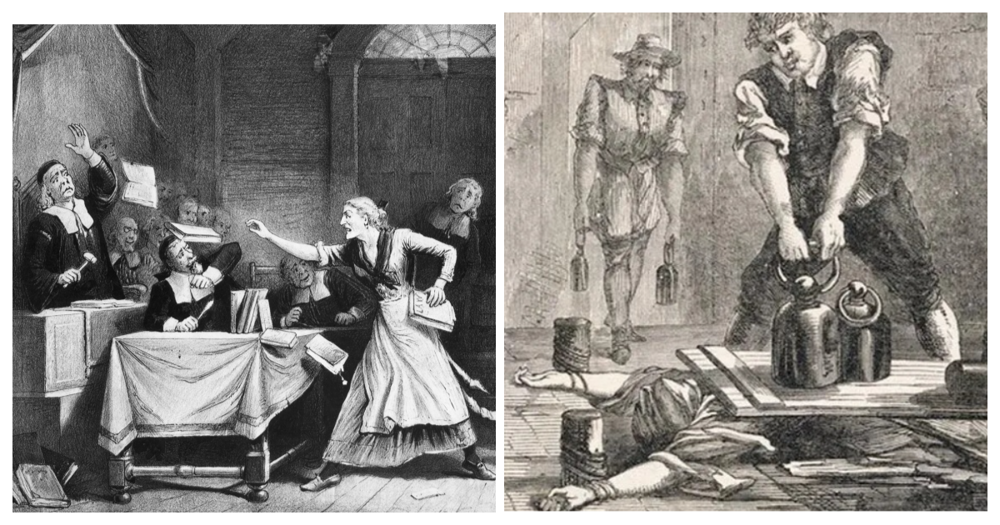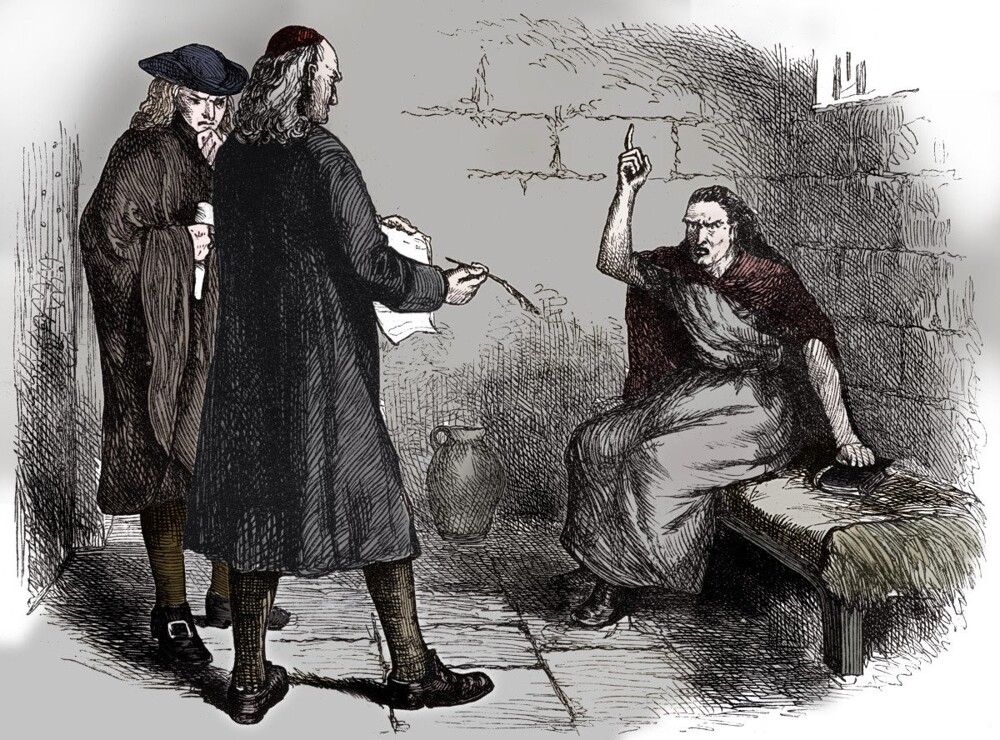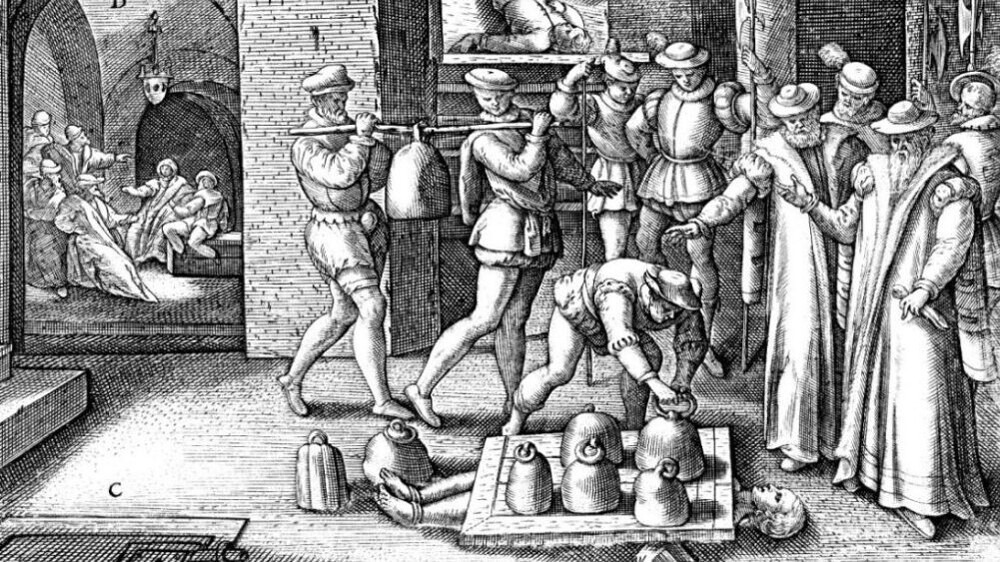The word can heal, but it can also kill. And this controversial story serves as clear proof of this. 
Giles Corey (c. 1611 – 1692) was a common farmer in Salem. Where during this period there was an active persecution of witches. The elderly couple were members of the church community, but this did not save them from persecution. 
Salem trial
Martha Corey could not stand the absolute lack of logic in the trials against so-called witches. And she publicly expressed her opinion, taking a good look at the judge and the entire system as a whole.
With this she signed her own verdict: the paranoid townspeople immediately reported it to the right place, justifying the denunciation with a simple truth - a raven will not peck out a crow’s eye.
Charges and trial 
The woman was immediately taken into custody. Giles tried to stand up for his wife, but immediately found himself in the dungeons himself, where he was escorted by the local sheriff George Corwin. After all, an additional witch or sorcerer is a plus in the karma of a servant of the law.
Giles began to be interrogated, demanding a confession of witchcraft. But the farmer stood his ground and rejected all claims. The matter threatened to drag on due to the old man's stubbornness. Questionable witnesses were immediately found who admitted that Giles' ghost had haunted and tormented them. And the farmer must suffer the deserved punishment.
At the trial, he remained silent, hoping for the effect of the law, according to which, if he did not go to trial, he could not be tried. Moreover, being a pragmatic person, the man wanted to protect the heirs by preserving all the property, which, upon admission of guilt, went to the treasury.
Peine forte et dure 
And instead of the sovereign's court, the stubborn man chose torture. Peine forte et dure. In the Anglo-Saxon legal system, it was a type of torture used on suspects who refused to stand trial.
A board was placed on the person's chest and stones were placed on top, gradually increasing the pressure, which could lead to death. In order to fall under the jurisdiction of the court, the suspect was obliged to either admit guilt or begin to justify himself.
If he remained silent and died under torture, he remained technically innocent. Some defendants facing the death penalty preferred death by peine forte et dure, in which case their property could avoid confiscation and go to their heirs.
The old man turned out to be incredibly persistent. And he held out for two days, only wheezing to his tormentors: “More, add more.” Unhappy Martha was hanged three days later. But the property remained in the family. Before his last breath, the stubborn old man managed to curse Salem.
Curse in action? 
Great Salem Fire
In 1711, the civil rights of many victims, including Giles Corey, were restored. A year later, the Salem Village Church rescinded his excommunication.
George Corwin blackmailed his son-in-law Corey out of money, threatening to take away the land. And he suddenly died of a heart attack. What's strange is that the same thing happened to all his successors. And locals saw Corey’s ghost in flesh until 1914, when the Great Salem Fire destroyed 1,376 buildings, one of which apparently had the spirit of a stubborn old man attached to it.
Add your comment
You might be interested in:





















